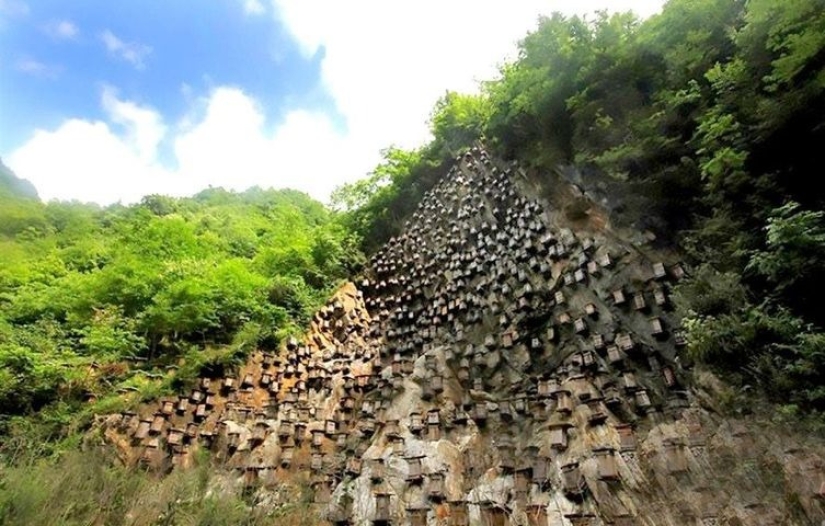The unique hive wall is the only wild bee sanctuary in China
Categories: Asia | Nature | Travel | World
By Pictolic https://pictolic.com/article/the-unique-hive-wall-is-the-only-wild-bee-sanctuary-in-china.htmlIn the national reserve of Shennongjia, which is located in the Chinese province of Hubei, 700 beehives are located on a stone cliff at a great height. Wild bees live here, which are almost gone in other regions of the country. To get honey, beekeepers have to climb steep slopes, but this is the only way to preserve a unique species of bees that is on the verge of extinction.

Beekeeping has existed in China since the 2nd century AD . About half of the honey supplies around the world come from here. However, more than 80% of the local wild bee populations have disappeared. Scientists believe the main reason for their extinction is the appearance of European bees (Apis Mellifera). As a result, Chinese hives began to attack new infections, the mating rituals of local bees were disrupted.

Now the Chinese bee (Apis Cerana Cerana) is considered an endangered species, so the hives on the rock in the Shennongjia National Reserve are on the list of the most protected natural sites in the country.

The so—called "wall of beehives" is a unique bee reserve, which consists of 700 wooden boxes attached to a stone sheer wall at an altitude of more than 1200 m above sea level. Wooden hives were attached to the rock so that local wild bees could settle in them. They have become home to thousands of representatives of a rare species of insects.

To get to the upper hives, beekeepers use the lower ones as steps. You can climb to the top of the cliff only with the help of a rope. Despite the fact that this is not an easy task, this is the only way to protect bees from bears who come here in search of honey and can destroy hives. Due to the location of the hives at a high altitude, wild animals cannot get to the delicacy.

The Shennongjia National Reserve is especially suitable for beekeeping, because it is located in several climatic zones at once — subtropical, temperate and moderately cold. There are about 1300 species of plants growing here, and this is a real paradise for bees.
There are many types of bees in nature, and among them there are very unusual ones. Vulture bees, which live in North and Central America, feed on carrion, but produce high-quality honey.
Recent articles

French cinema can easily be called a unique direction in art, which is fundamentally different from what he used to do in ...

Fans of actress Monica Bellucci do not associate her style of clothing with black dresses in vain. A famous Italian woman has ...

What could be sweeter cats, dogs and other animals? That's right — nothing! Therefore, we have compiled for you the lovely, kind ...